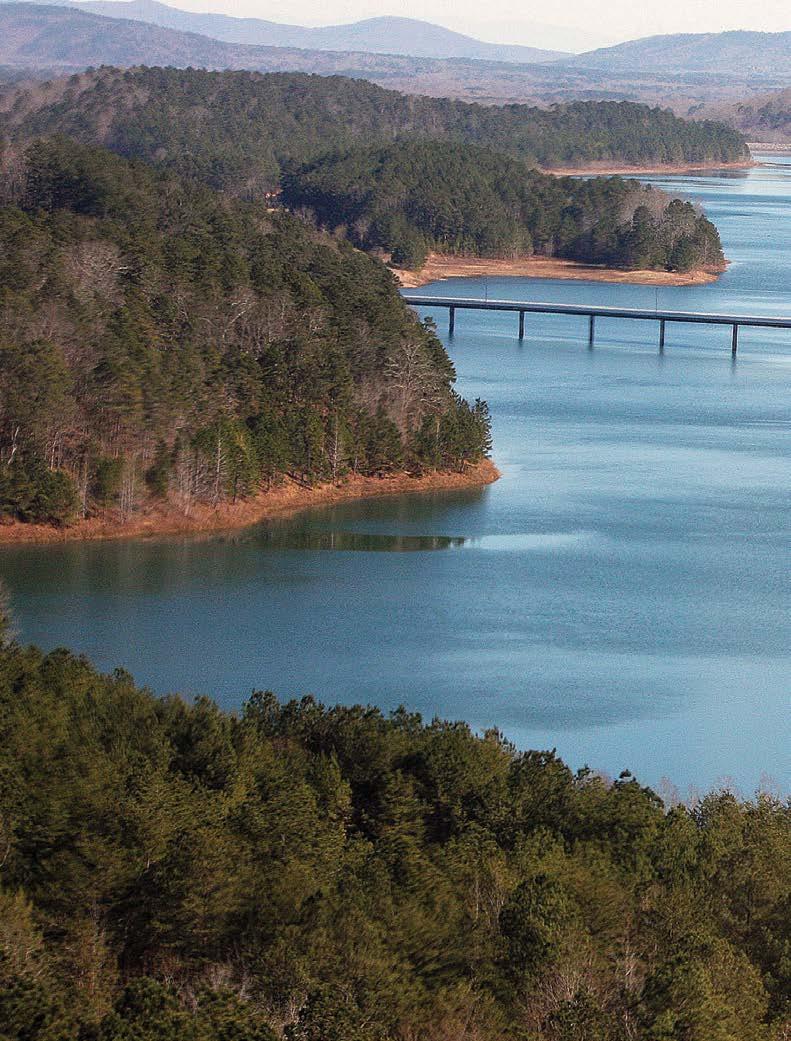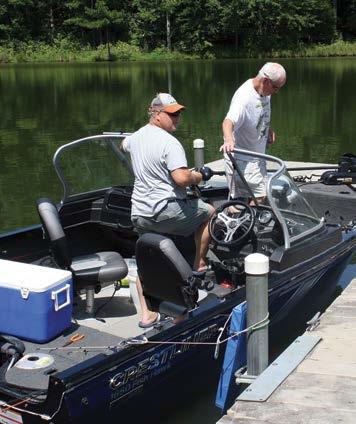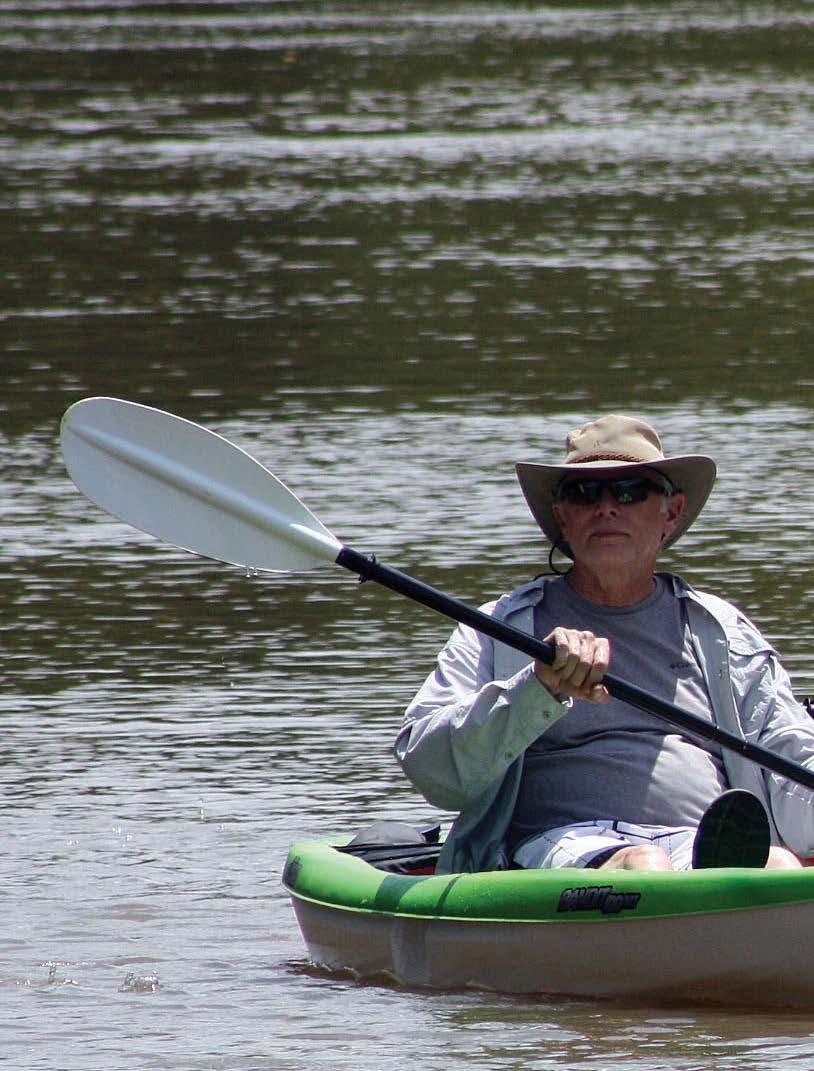
4 minute read
The Rocky Mountain Project
One of Floyd County’s favorite recreational sites also happens to be on the largest economic development projects in the area. Aside from its beautiful white sand beach, campgrounds, and some of the best lake fishing in Northwest Georgia, the Rocky Mountain project in the Texas Valley can produce more than 1,000 megawatts of electricity when Georgia’s grid needs it the most.

Advertisement
(Continued on page 44)
The Rocky Mountain pumped-storage Hydroelectric Plant was originally a development of Georgia Power. Construction started in 1977, but Georgia Power scrapped the plant in the late 1970s. Oglethorpe Power finished the project with a loan guarantee of more than $900 million from the Rural Electrification Administration. The hydroelectric plant was commissioned in 1995. Upgrades to increase the capacity of the plant were undertaken in 2011 and 2016. The most recent upgrades required an investment of close to $60 million.
Oglethorpe has a 75% stake in the plant, while Georgia Power retained 25% ownership. Oglethorpe paid more than $3.22 million in property taxes to Floyd County in February 2020 for its portion of the plant’s ownership.
A trio of massive turbines provides what is known as peaking power during the hottest hours of summer and the coldest hours of winter. Water from the reservoir atop the mountain is flushed through turbines to provide electricity when the grid needs it the most. The pumped-storage system allows the plant to respond to the electric grid’s needs within about three minutes. During off-peak periods, the turbines are reversed to pump the water back to the top of the mountain for use the next time it’s needed.
While Oglethorpe Power directs the project and production of electricity, the Georgia Department of Natural Resources manages the recreational opportunities that abound at the sprawling grounds in the Big Texas Valley northwest of Rome. Archery hunting for deer, turkey, and small game is open during the specific seasons, and waterfowl hunts are allowed with firearms.
Two lakes, Antioch and Heath, offer boating and fishing. Boats can be operated with motors but can only be run at idle speed, which does not create a wake. Heath is managed for trophy-size fish and is only open to fishing the first ten days of the month. Together the lakes span across more than 550 acres. DNR Fisheries Biologist Jim Hakala said the big three are bass, bream and crappie. In Antioch, bass must be at least 14 inches long to keep. Heath Lake is known as a slot lake. Bass must be between 14 and 20 inches long to keep. Anything more or less must be released back into the lake. Matt Callahan, Ringgold, fishes Heath as often as he can get away from his day job as a pipefitter. “I’ve caught quite a few decent fish out of there,” Matt said. “I like to crappie fish.” The lakes at Rocky Mountain are a favorite of the Reel Krazy Kayak Fishing Club, which regularly holds tournaments at the lakes.
A large campground, 36 campsites, is virtually full of recreational vehicles just about every weekend and much of the weekdays during the summer months. The white sand beach is typically crowded during the heat of the summer. John and Gail Henderson, from Calhoun, love to bring their camper trailer to the lake on weekends. “We come out here so he can rest instead of working himself silly,” Gail said. “We can fish. There’s plenty of room between campers, so you feel safe (during the recent COVD-19 restrictions).” “It’s very quiet, and the people are friendly,” John Henderson chipped in.
Kathy Williams and her husband George Williams bring their kayaks and bicycles to the lake with the family and said they enjoy the whole weekend camping experience at the sprawling complex. “It’s quiet, peaceful, and beautiful,” said Cheryl Johnson, Cedartown. Like the Williams, they do a little bit of everything from hiking to biking, kayaking, and fishing.
Alcoholic beverages are prohibited anywhere in the park, which contributes to the family-friendly atmosphere. The project is also a favorite for birders because it is home to two bald eagle nests, one overlooking Antioch Lake and the other overlooking Heath. It is not unusual to see eagles feasting on crappie, bass, or bluegill from the lakes during the breeding period from late October through April.
Later in the season, usually from May through the end of July or a little longer, osprey also nest and raise young on the lake. The osprey is also expert anglers who are virtually 100% dependent on the lakes’ fish to raise their young.
Hakala, whose office will be responsible for the recreational area’s management, said he hopes that many people who discovered Rocky Mountain for this first time this year will become frequent visitors in the future.














